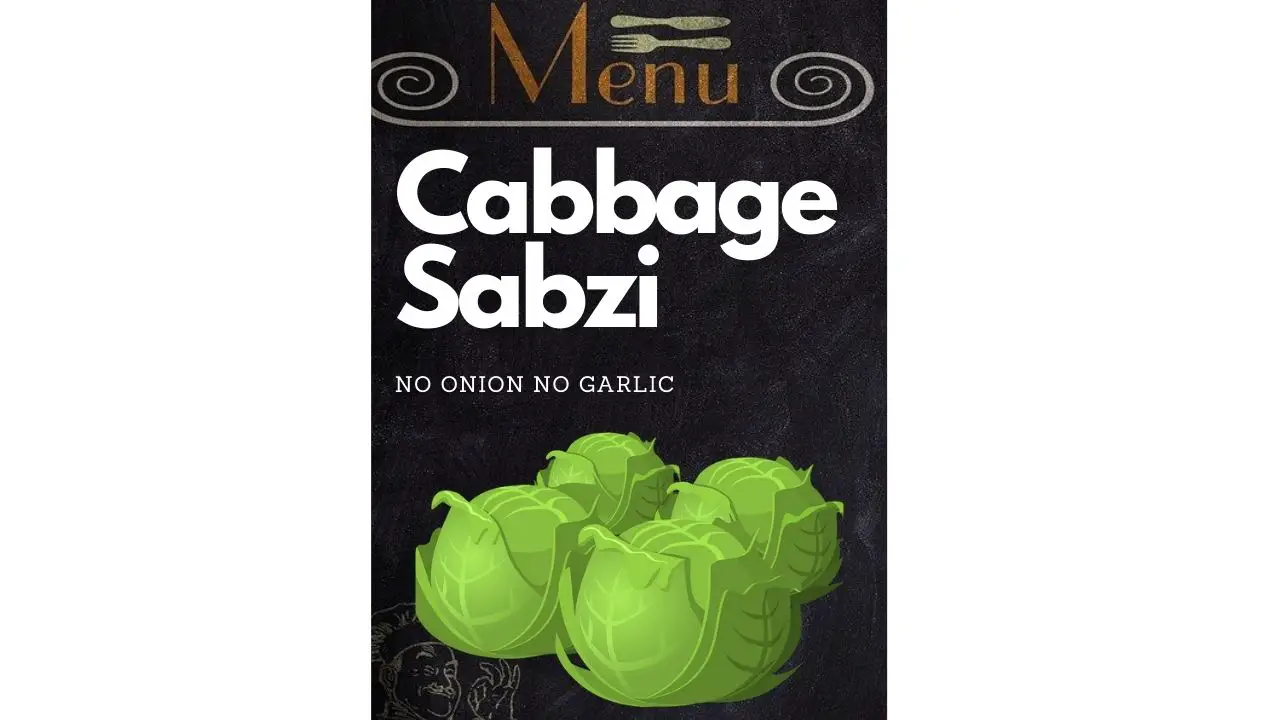What is Cabbage?
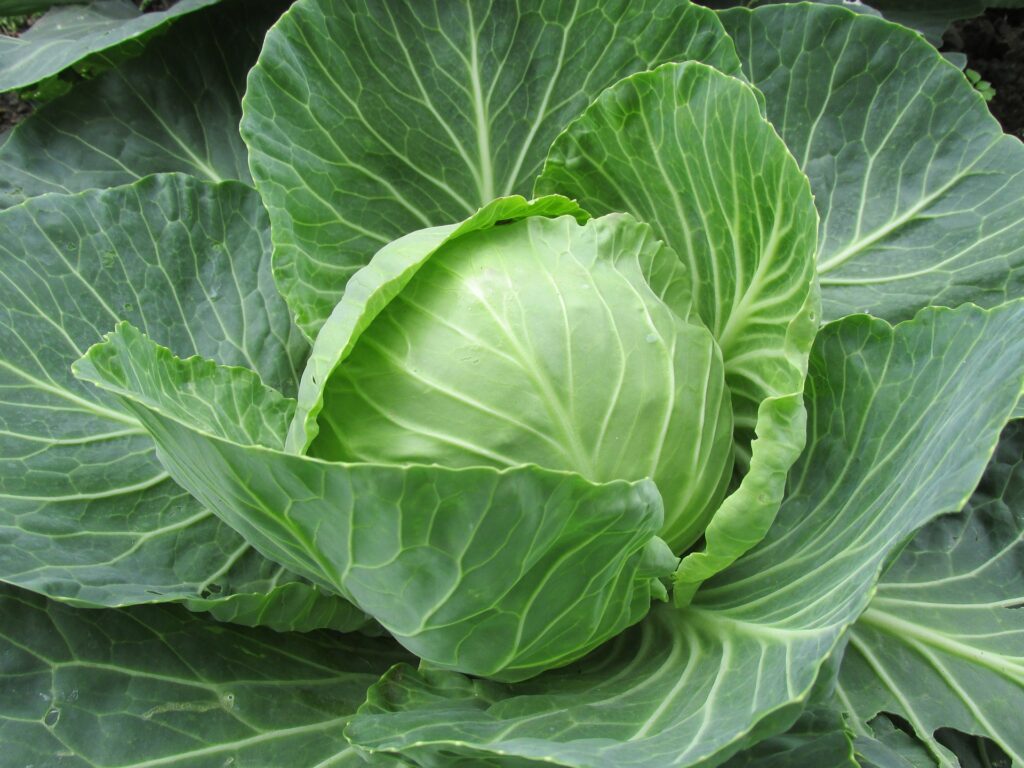
Cabbage is a cruciferous vegetable that is commonly mixed with lettuce due to its resemblance in appearance. Cruciferous vegetables like cabbage, kale, and broccoli are known for their high nutritional value. Cabbage may protect against radiation, prevent cancer, and lower the risk of heart disease. Cabbage leaves can be smooth or crinkled, and the colour ranges from green to red and purple.
Cabbage’s Origins – Where Did Cabbage Come From?
Cabbage is a green vegetable from the brassica family. It is harvested once a year, and its lush green or purple leaves are used in a variety of cuisines. The head of cabbage, which may weigh between 0.5 and 4 kilos, is high in vitamins and minerals, has nearly no fat, and is high in fibre, making it a nutritious food to consume.
We don’t know for sure where cabbage first appeared because various plants in the “brassicas” family grow all over the world, and today’s cabbage is descended from them.
The wild progenitors of the West cabbage, which had thick leaves that stored water and allowed them to thrive in colder climates with less water, were cultivated in Europe around 3,000 years ago. Cabbage has been used in the East since 4,000 BC, and it was first grown in North China. The Celts of Central and Western Europe produced these non-heading cabbage varieties. Cabbage was also known in Mesopotamia, although it was not cultivated by the ancient Egyptians until the Ptolemaic era. Cabbage, along with other vegetables, had become a common cuisine in Egypt by the time of early Rome. Theophrastus (371–287BC), known as the “Father of Botany,” describes cabbage in his writings, indicating that Greeks were at least aware of them as far back as the 4th century BC.
The Greeks termed it “krambe,” while the Romans referred to it as “brassica” or “olus.” According to legend, Diogenes ate only cabbage and drank only water. Cabbage was considered a luxury in Rome, and many people thought it was superior to all other vegetables. They also utilised it as a medicine to treat gout, headaches, and the symptoms of poisonous mushroom consumption. Some even suggested bathing infants with cabbage eater`s – urine. Pompeii, Cumae, and Sabellian cabbage were among the seven recognised cabbage varieties at the time, as per Pliny the Elder. Apart from nutrition, Ancient Egyptians and Romans ate more cabbage before a night of drinking, allowing them to drink more.
Cabbage was commanded to be cultivated during the period of Charlemagne (Charles the Great, 8th century) in the “Capitulare de villis,” a treatise that established rules and regulations on how to administer the country’s lands and laws.
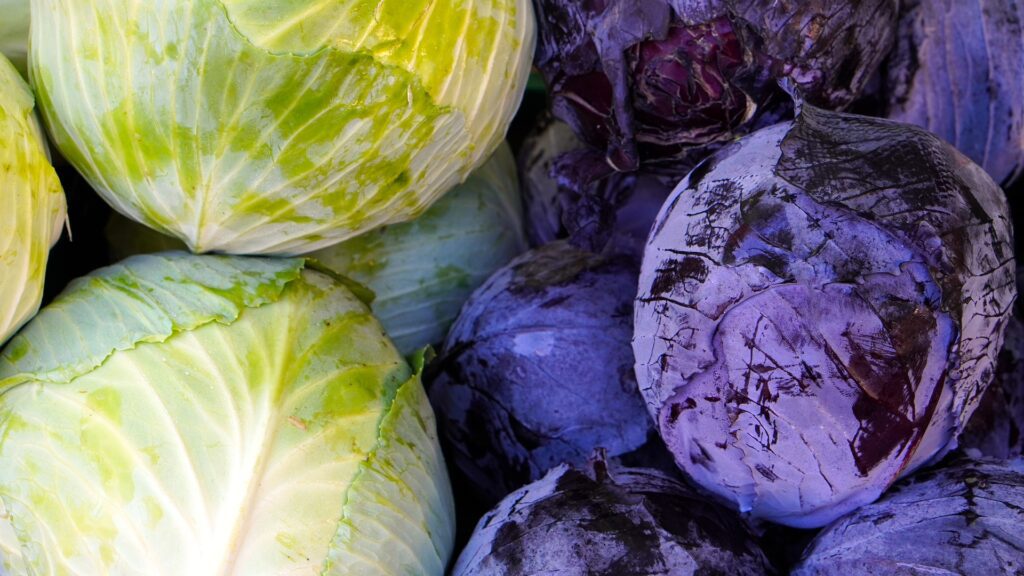
The first round-headed cabbages were introduced in 14th-century England, and they quickly became famous in European cuisine. We may see evidence of this in manuscripts from the time period, where they appeared in illuminations and other texts, where they were referenced as both wealthy and poor people’s sustenance. Cultivated cabbage varieties spread from Europe to Asia and the Americas. It was brought to India by Portuguese colonisation traders during the 14th and 17th centuries, and it was unknown in Japan until the 18th century.
Jacques Cartier, a French explorer, brought the first cabbage to America during his third journey in 1541–1542. Cabbage became essential on lengthy ocean voyages due to its high vitamin C content, which helps to avoid scurvy. Sauerkraut (cabbage preserved in brine) was used by ship doctors to cure sailors’ wounds and prevent gangrene (for example, the doctor aboard Captain Cook’s ship that sailed in 1769).
China is now the world’s greatest cabbage grower, followed by India and Russia, which is the world’s top cabbage eater.
Cabbage is prepared in a variety of ways all around the world. Cabbage can be steamed, pickled, stewed, sautéed, or braised in addition to being eaten raw as a salad. The most popular pickled variations are sauerkraut and kimchi, whereas coleslaw is one of the most popular salads.
When did cabbage originate in India?
From Europe to Asia and the Americas, cabbage cultivars were cultivated.Between the 14th and 17th centuries, colonisation traders from Portugal took it to India, and it was unknown in Japan until the 18th century.
Is cauliflower an indigenous Indian vegetable?
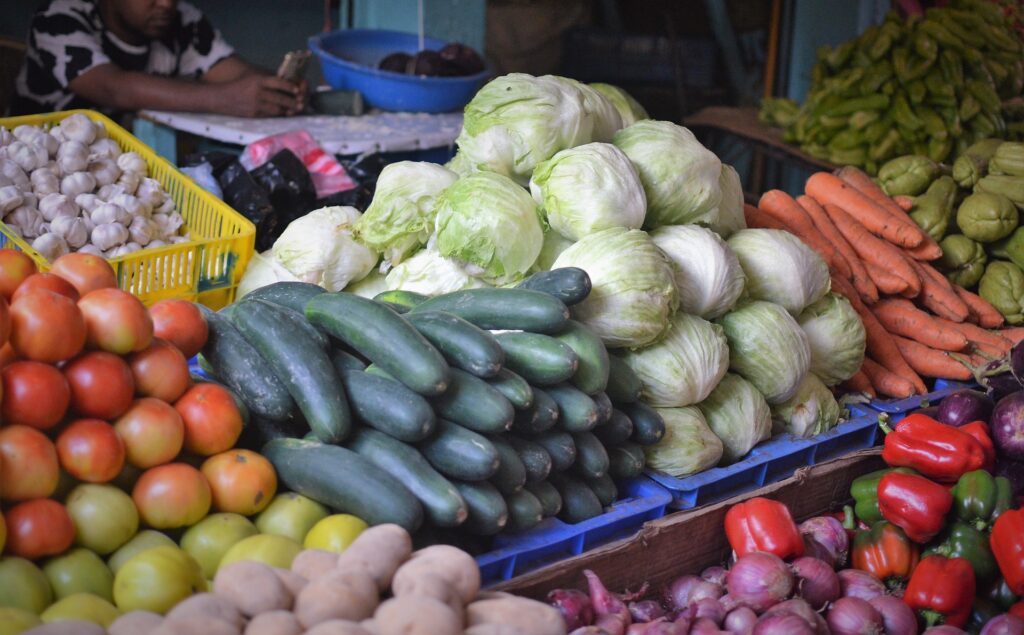
Cauliflowers are native to Asia, where they have been consumed for generations. However, it was not until the seventeenth century that they migrated to other continents. It is currently primarily grown in Asia, with India, China, Italy, and France serving as major producers.
Usage
The leafy head, or more accurately, the spherical cluster of juvenile leaves, excluding the partially unfurled outer leaves, is the only portion of the plant that is generally eaten. The so-called ‘cabbage head’ is a leaf vegetable that is frequently consumed—raw, cooked, or preserved—in a broad variety of recipes. While raw cabbage can be eaten uncooked, it is most commonly sliced into thin strips or shredded and used in salads, or diced for coleslaw.
Cabbage is frequently boiled, mainly as part of soups or stews, such as borscht from Central and Eastern Europe. Boiling the leaves tenderises them, releases sugars, and gives them a distinct “cabbage” aroma.
In North America, boiled cabbage appears to have lost prominence, probably due to the strong odour emitted during boiling or its reputation for causing flatulence. Boiled cabbage can be a good source of umami, sugars, and dietary fibre when served alongside meats and other meals.
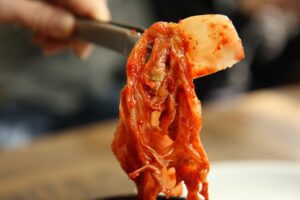 Cabbage is used for pickling and is called ts’ai, or rice-friendly. Kim-chi, often known as kim-chee, is a popular pickled cabbage dish in Korea.
Cabbage is used for pickling and is called ts’ai, or rice-friendly. Kim-chi, often known as kim-chee, is a popular pickled cabbage dish in Korea.
Cabbage is commonly consumed as sauerkraut in Germany. Lactic acid fermentation is performed on finely sliced cabbage that has been combined with salt. Sauerkraut was formerly made at home as a manner of conserving food for the winter, but it is now primarily a manufactured product, similar to canned and pickled foods.
Cabbage is low in calories, a rich source of numerous minerals (especially potassium), and high in vitamins A and C, but it is also low in protein (Bewick 1994). Green cabbage cultivars have more vitamin A than red cabbage cultivars, while savoy kinds have more vitamin A than smooth varieties (Bewick 1994).
Cabbage has been used to alleviate acute inflammation in European folk medicine (Woodman 2003). To relieve discomfort, a raw cabbage paste can be wrapped in a cabbage leaf and wrapped around the affected area. It could also help women with uncomfortably engorged breasts who are breastfeeding (Munns 2003).
How do you go about picking cabbage?
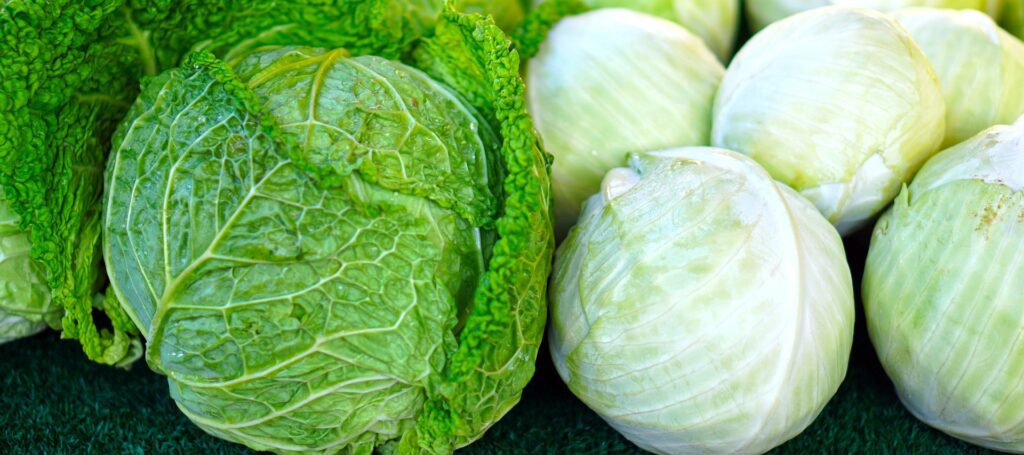
Look for a head of cabbage that is dense, firm to the touch, and weighty for its size when selecting one. The leaves should be tightly packed and appear smooth and nearly glossy. Avoid bruised or blemished heads, as you should with other vegetables.
Health Benefits of Cabbage
1.Cabbage is a nutrient-dense vegetable.
- Cabbage is a nutrient-dense vegetable.
- Cabbage has an outstanding nutritional profile despite its lowcalorie content.
- In reality, one cup of raw green cabbage (89 g) includes (2):
- 22 calories
- 1 g protein
- 2 g fibre
- Vitamin K intake should be at least 85% of the RDI.
- Vitamin C: 54% of the recommended daily allowance
- 10% of the recommended daily intake of folate
- Manganese is present in 7% of the RDI.
- Vitamin B6: 6% of the recommended daily intake
- Calcium: 4% of the recommended daily intake
- Magnesium: 3 percent of the RDI Potassium: 4% of the RDI
- Vitamin A, iron, and riboflavin are among the other minerals contained in cabbage in trace amounts.
- As you can see from the list above, it’s high in vitamin B6 and folate, both of which are necessary for a variety of bodily functions, including energy metabolism and normal nervous system function.
- Cabbage is also high in fibre and contains potent antioxidants such as polyphenols and sulphur compounds.
- Antioxidants protect the body from the effects of free radicals.
2.It Could Aid in Reducing Inflammation
- Inflammation isn’t necessarily a terrible thing.
- In truth, your body uses the inflammatory response to protect itself from infection and to speed up the healing process. Acute inflammation like this is a normal reaction to an injury or infection.
- Chronic inflammation, on the other hand, develops over time and is linked to a variety of disorders, including heart disease, rheumatoid arthritis, and inflammatory bowel disease.
- Antioxidants protect the body from the effects of free radicals.
- In fact, studies have found that consuming more cruciferous vegetables lowers certain inflammatory blood indicators.
3.Cabbage is high in vitamin C
- Vitamin C protects the body from free radical damage, which has been linked to a number of chronic disorders, including cancer.
4.It Assists in Digestion
- If you want to improve your digestive health, cabbage is the way to go. This crunchy vegetable is high in insoluble fibre, a type of carbohydrate that cannot be broken down in the intestines. Insoluble fibre bulks up stools and promotes regular bowel movements, keeping the digestive tract in good shape.
5.Assist in the Maintenance of a Healthy Heart
- Red cabbage contains powerful antioxidants called anthocyanins. They give this wonderful veggie its vibrant purple colour.
- The flavonoid family includes plant pigments called anthocyanins.
- Inflammation is known to play a role in the development of heart disease, and anthocyanins’ anti-inflammatory properties are thought to be responsible for their preventive benefits.
- Cabbage has roughly 36 different types of strong anthocyanins, making it a heart-healthy food.
6.Assist in the reduction of cholesterol levels
- Cholesterol is a waxy, fat-like molecule that can be found in all of your body’s cells.
- Some people believe that all cholesterol is bad, although it is necessary for the body to function properly.
- Cholesterol is required for critical functions such as effective digestion and the creation of hormones and vitamin D.
- People with high cholesterol, on the other hand, are more likely to develop heart disease, especially if their “bad” LDL cholesterol levels are high.
- Cabbage includes two compounds that have been demonstrated to lower harmful LDL cholesterol levels.
7.Cabbage is a good source of vitamin K.
- Vitamin K is a group of fat-soluble vitamins that have a range of functions in the human body.
- Vitamin K1 is an important nutrient that serves a variety of functions in the body.
- Without vitamin K, the blood would lose its capacity to clot properly, raising the risk of serious bleeding.
- .Vitamin K also acts as a cofactor for enzymes involved in blood coagulation.
- Vitamin K also acts as a cofactor for enzymes involved in blood coagulation.
Ingredients:
- 1 shredded cabbage,
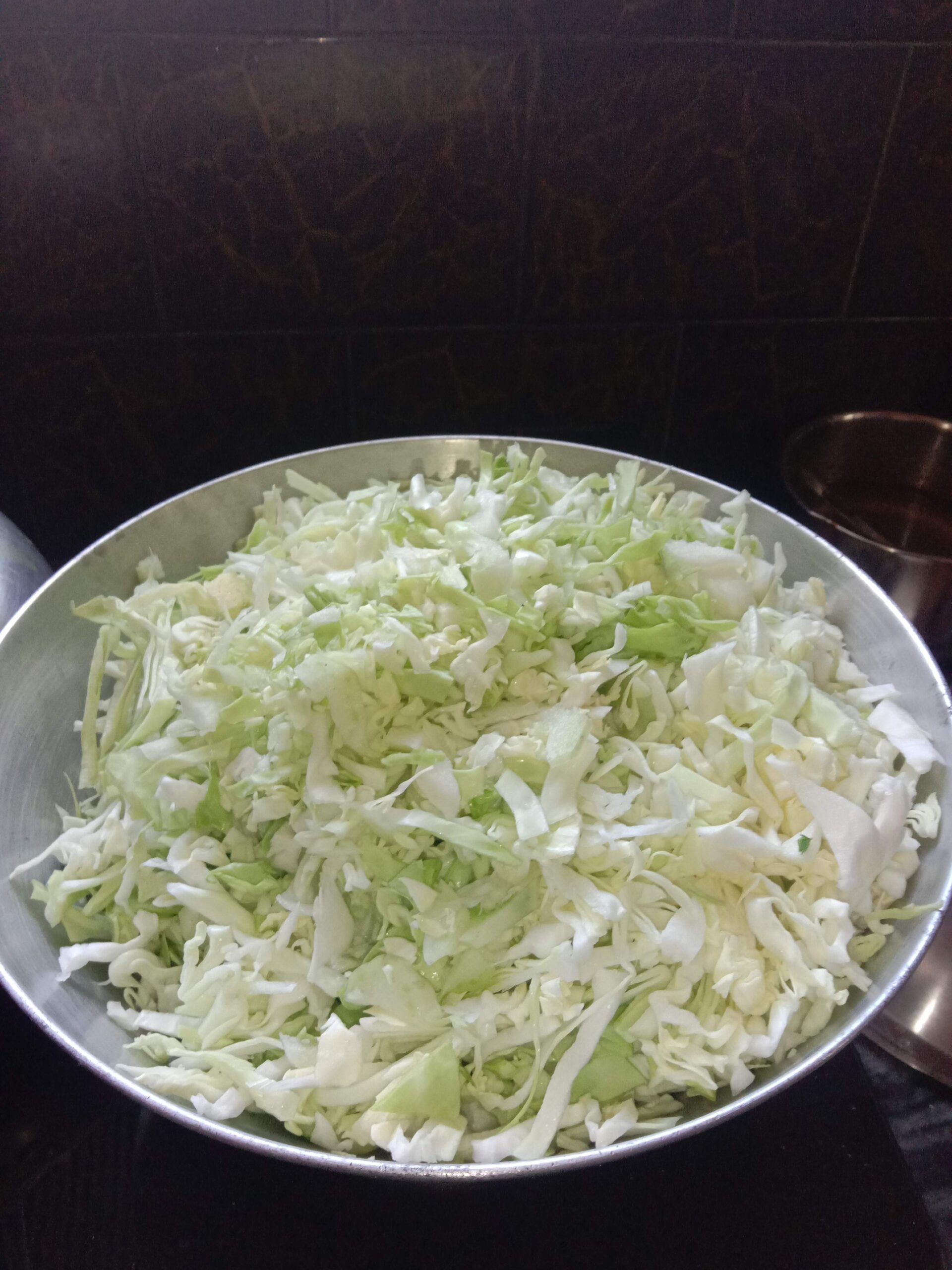
- 1/4 cup green peas, fresh or frozen
- 2 chopped tomatoes
- 1/2 tsp cumin seeds
- 1 bay leaf
- 1 tsp garam masala (cinnamon, cardamom, clove powdered)
- 1⁄2 teaspoon of turmeric powder
- 1 teaspoon powdered cumin (Jeera)
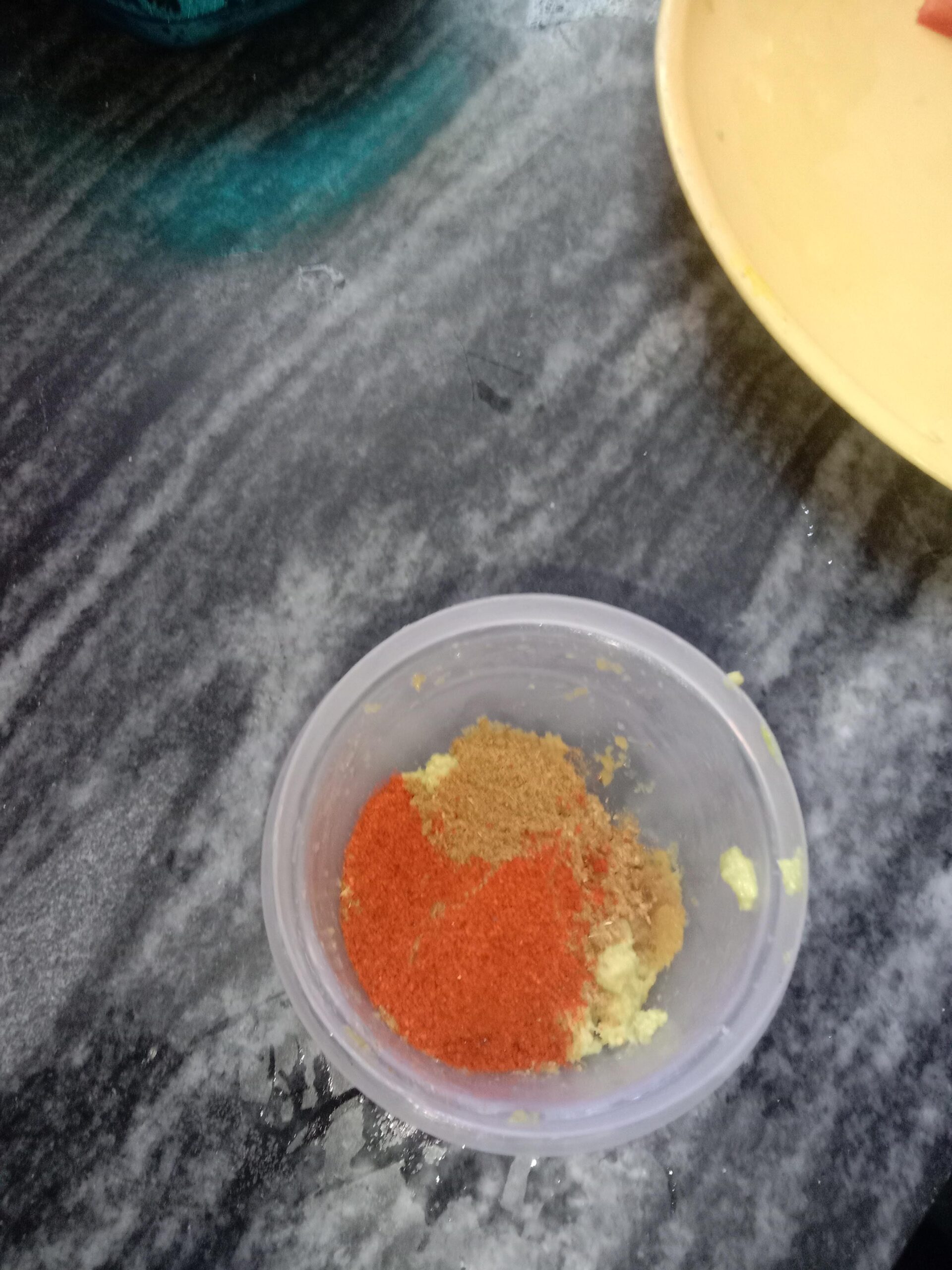
- 3/4 teaspoon of coriander powder (Dhania)
- 1 teaspoon granulated sugar (Optional)
- season with salt to taste
- 1 tsp. clarified butter (desi ghee)
- mustard oil
Procedure
- Steam the shredded cabbage
- Heat mustard oil in a pan
- Add bay leaf and cumin seeds into it
- As cumin seeds crackle, add potatoes and saute
- Put tomatoes along with salt
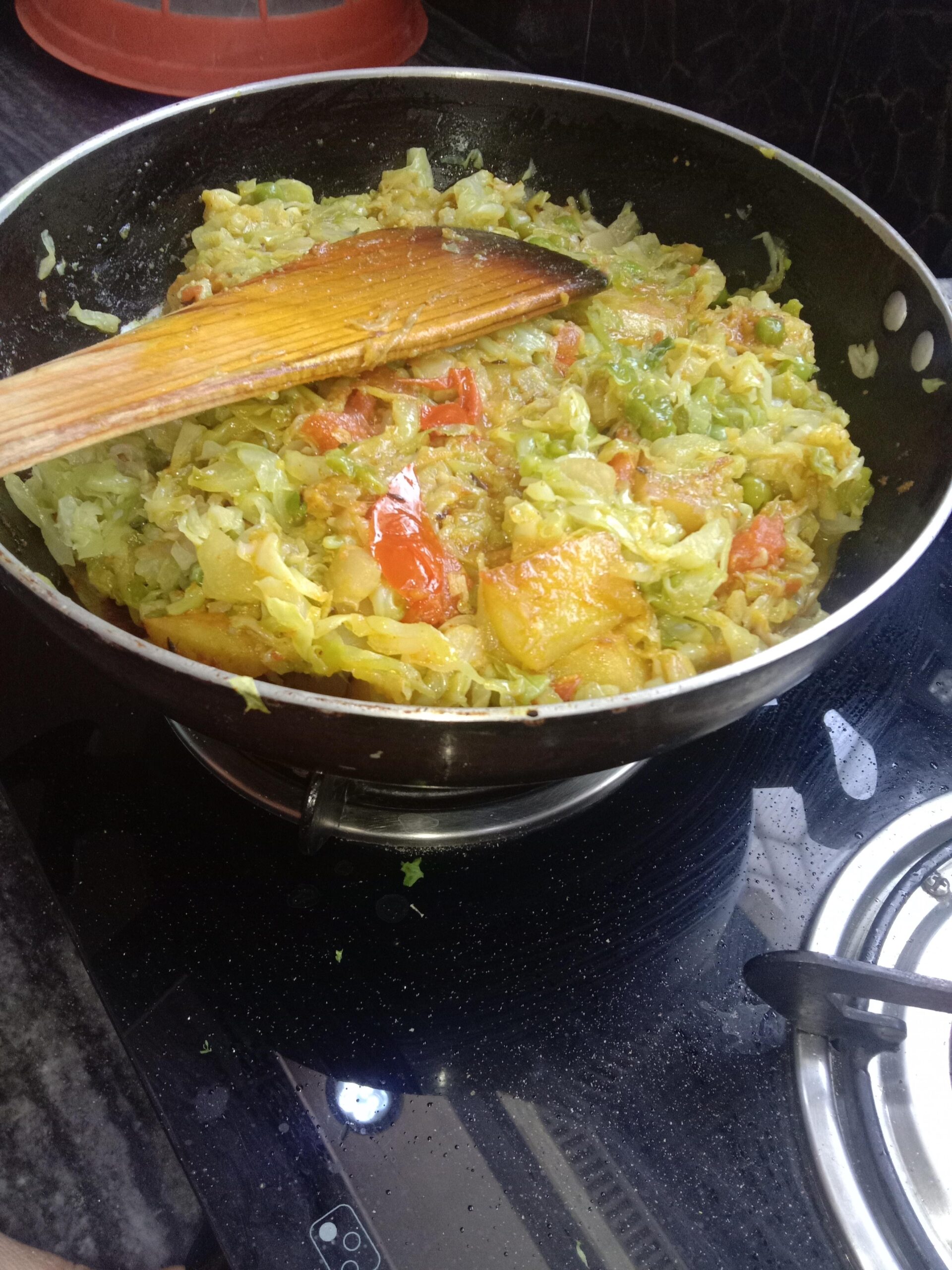
- saute them
- Now add all the spices along with water and let it simmer for few minutes till potatoes get half boiled.
- Add steamed cabbage and saute till oil separates.
- Finally add 1 tsp ghee/clarified butter
- Cabbage and potato recipe/ patta gobi ki sabji is ready to be served
- Serve with hot steam white rice/ chapati/paratha of your choice.
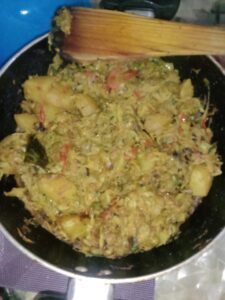
Takeaway
This post will explain you how to prepare cabbage and potato recipe, a delicious and nutritious dish. Cabbage and potato recipe is a simple but excellent dish cooked with only a few spices and basic ingredients, but the aroma is incredibly delectable. I’m sure your family and acquaintances will be impressed! Do try this at home.
